We love traditional old techniques. There’s something about them that feels so special. Perhaps it’s the human touch, the hand spinning and weaving of threads, the sound of fingers touching the wooden loom, or maybe it’s simply just the people involved in the process that gives us comfort in the fact that what we’re purchasing lifts a whole community out of poverty and contributes to their welfare. As a fashion label, one which has supported a community of women single parents for almost 3 years, we’ve always been fascinated by the amount of craftsmanship that goes into making clothes. This is why whenever an opportunity presents itself to preserve such an artistry, we’re always the first ones to jump on it. The production of cashmere is one such craft, but the centuries old making technique is on the verge of becoming extinct, as climate changes and threatens to destroy the Changpa goats from whose overcoat the cashmere’s extracted. This is one of the reasons we decided to go with cashmere blend and wool for our new collection “MAD WOMEN”, because apart from it being exceptionally luxurious, we wanted to extand support to the families in the mountains that make this fabric. Dedicated to environmental female activists, this line is the most sustainable and environmentally friendly collection made entirely out of discarded leftover materials from production factories in Macedonia, which means it’s super limited. Read on to find out more about the production process, the materials and the inspiration behind this line.
1. Picking The Fabrics
Cashmere is one of the most refined fabrics in the world due to the tumultuous and labour intensive production process. It happens during spring, when goats’ hair is moulting. People who are in charge of making this fabric, carefully comb goat’s hair and manually sort out the good fibre from the bad. Once cleaned and processed, the wool from a single cashmere goat only amounts to around 100grams (4ounces). This process then is followed by cleaning the good fibre, hand-spinning it and weaving it in, to make the cashmere. It takes several months to a year for highly skilled artisans to weave the fabric on wooden looms.
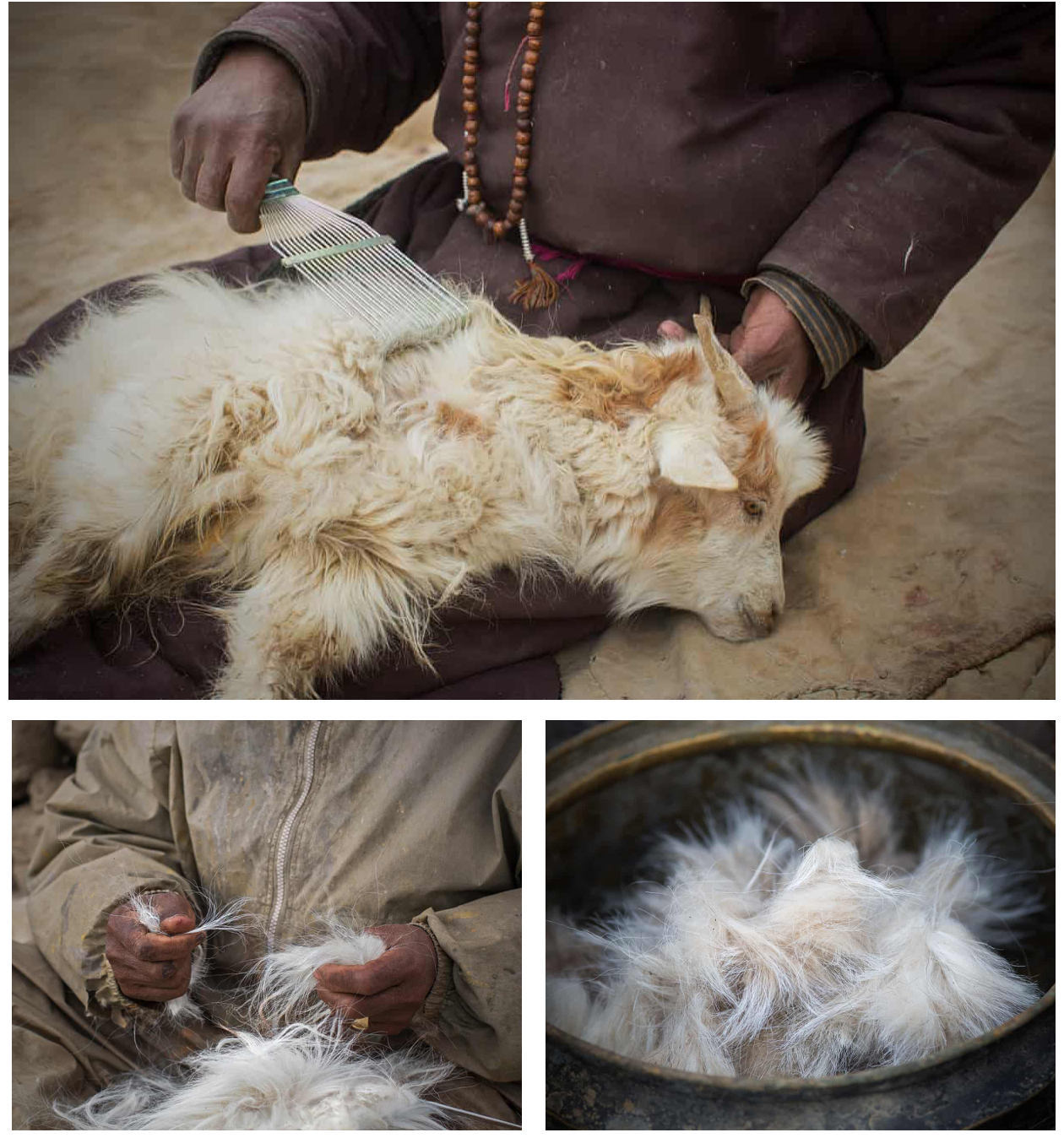
Due to rise in temperatures in recent years, the soft layer of cashmere goats that forms as a combination of the altitude where these goats live, the freezing temperatures and the harsh bitter winds is in peril. This is one of the reasons, we wanted to go for a cashmere blend, not only to provide our customers with a luxurious feel, but also to support these artists with their craft that slowly starts to wither and die. So now that you know the ‘why’, let’s give you the ‘how’ and ‘where’.
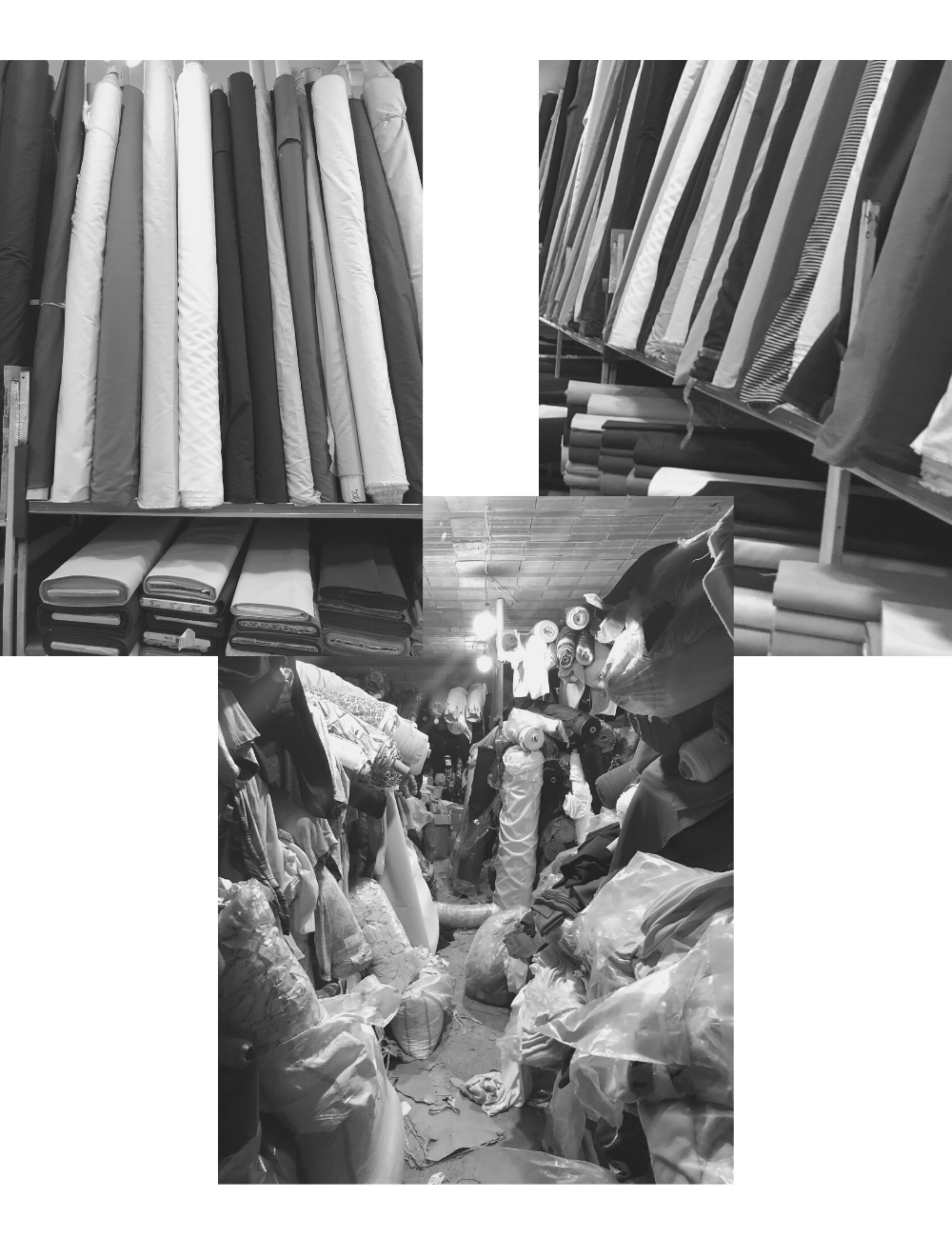
This facility offers an intimate glimps into the world of landfills, where millions of tonnes of fabrics, as well as unsold clothes are discarded each year and left to be burn. It’s a place where materials go to die. That was until we fished them out and gave them a new life. Luckily for us among the chaotic bunch of textile castoffs and scraps, we found the softest cashmere and wool blend in beige cream color and brown windowpane pattern. We also found cotton blend fabric in olive green and navy blue, and a stunning olive color satin. Needless to say, we left pretty happy and patted our shoulders for a job well done. 😜
2. Picking Out The Colors
We weren’t quite sure what we would find among the discarded materials, so our moodboard was very basic and simple. It only contained neutral colors like cream, light brown, olive, navy blue, white and black.
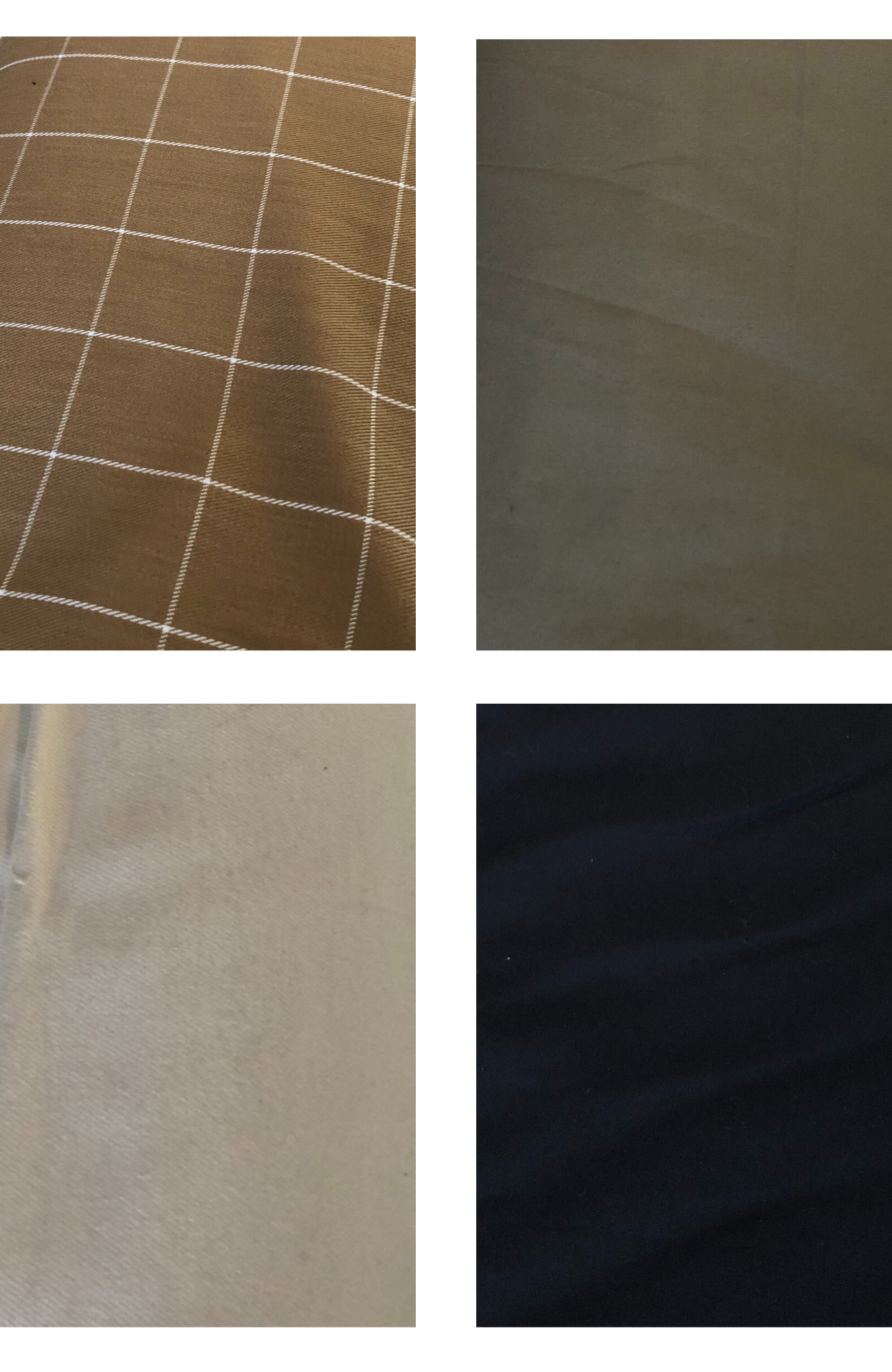
3. The Process of Making It
We’ve always pride ourselves in paying extra attention to details. We do a lot of hand stitching and hand sewing of details like buttons, labels and stickers.
This time around, apart from doing the production, our community of women single parents was also involved in the design as well, as they suggested a few tweaks to make the designs more practical and functional. This is what we’ve envisoned.
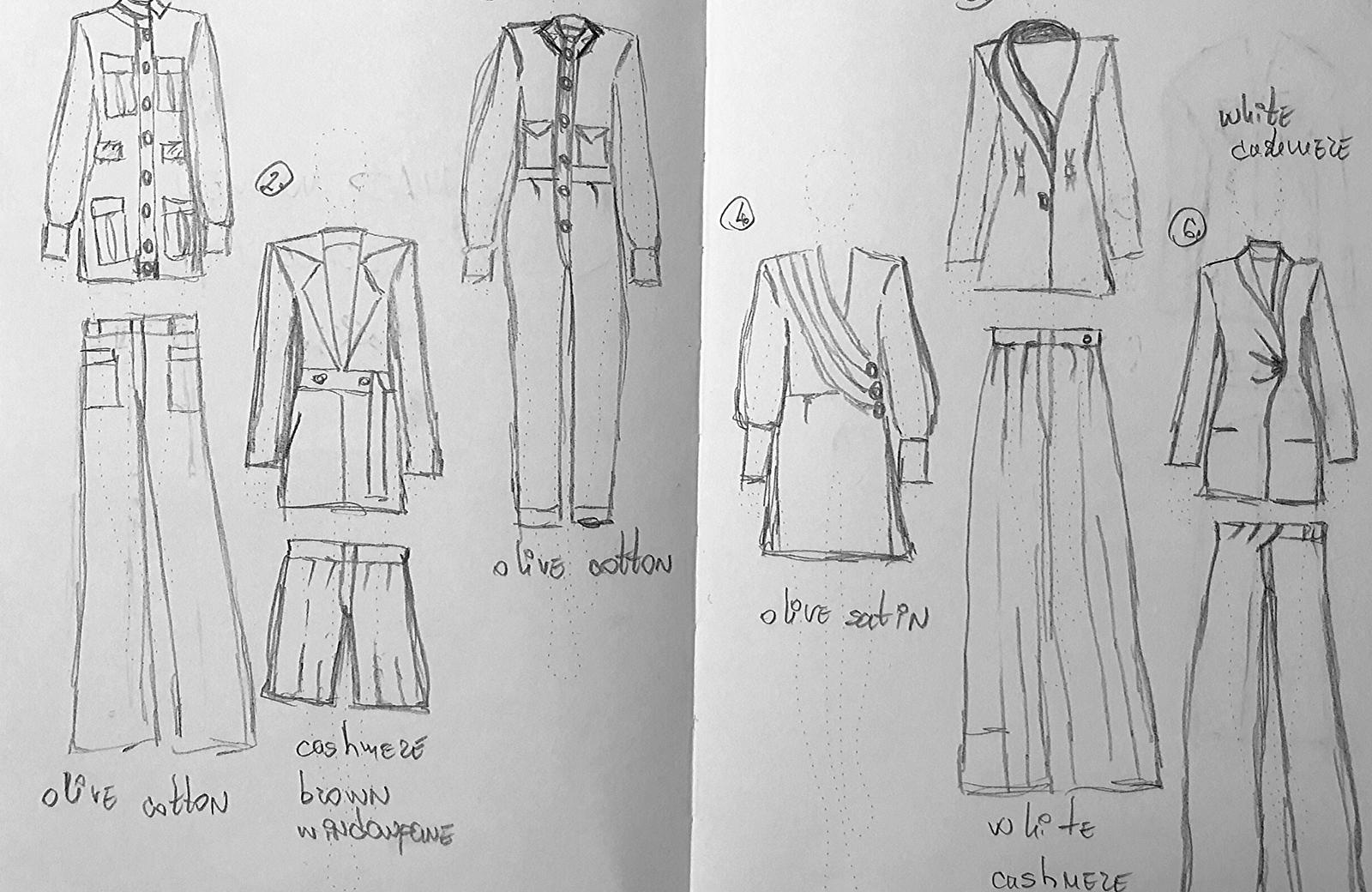
Keep on reading to find out what we changed from the original designs.
4. Inspiration Behind The Designs
What we definitely knew for sure was that we wanted to honor women who have contributed to environmental causes, women whose brave actions have rightfully earned them the title “Guardians of the Planet”. To do so we based our designs on 7 incredible environmental activists who have dedicated their lives to fighting corporations to preserve nature and empower women the world over.
The Winona Suit
The strict lines that follow the structure of a woman’s body and a silhouette that commends attention are the pillars for the design of The Winona Suit. The light, windowpane, cashmere suit is inspired by Winona La Duke, a Native American activist that build environmentally conscious production of everything from food to energy, through her non-profit White Earth Land Recovery Project, reviving the cultivation of wild rice in Minessota.
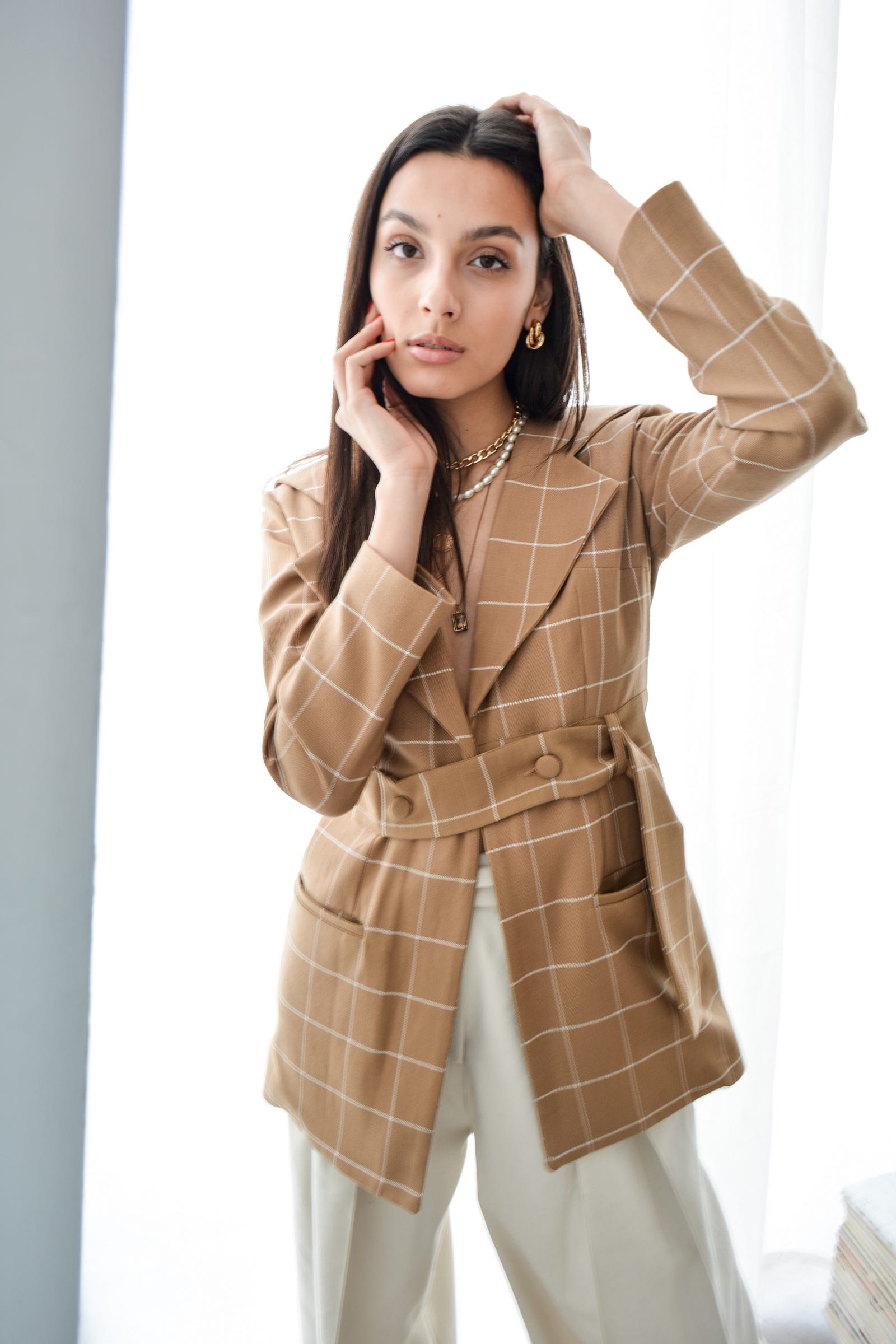
The Gisele Dress
The glitz and glam of the olive satin reminded us of the fierce walk and passionate talk about environmental issues of one of world’s top models, Gisele Bündchen. She’s one of the most vocal environmental activists who has single handedly raised awareness about environmental topics and has made the issue of climate change relevant in the mainstream.
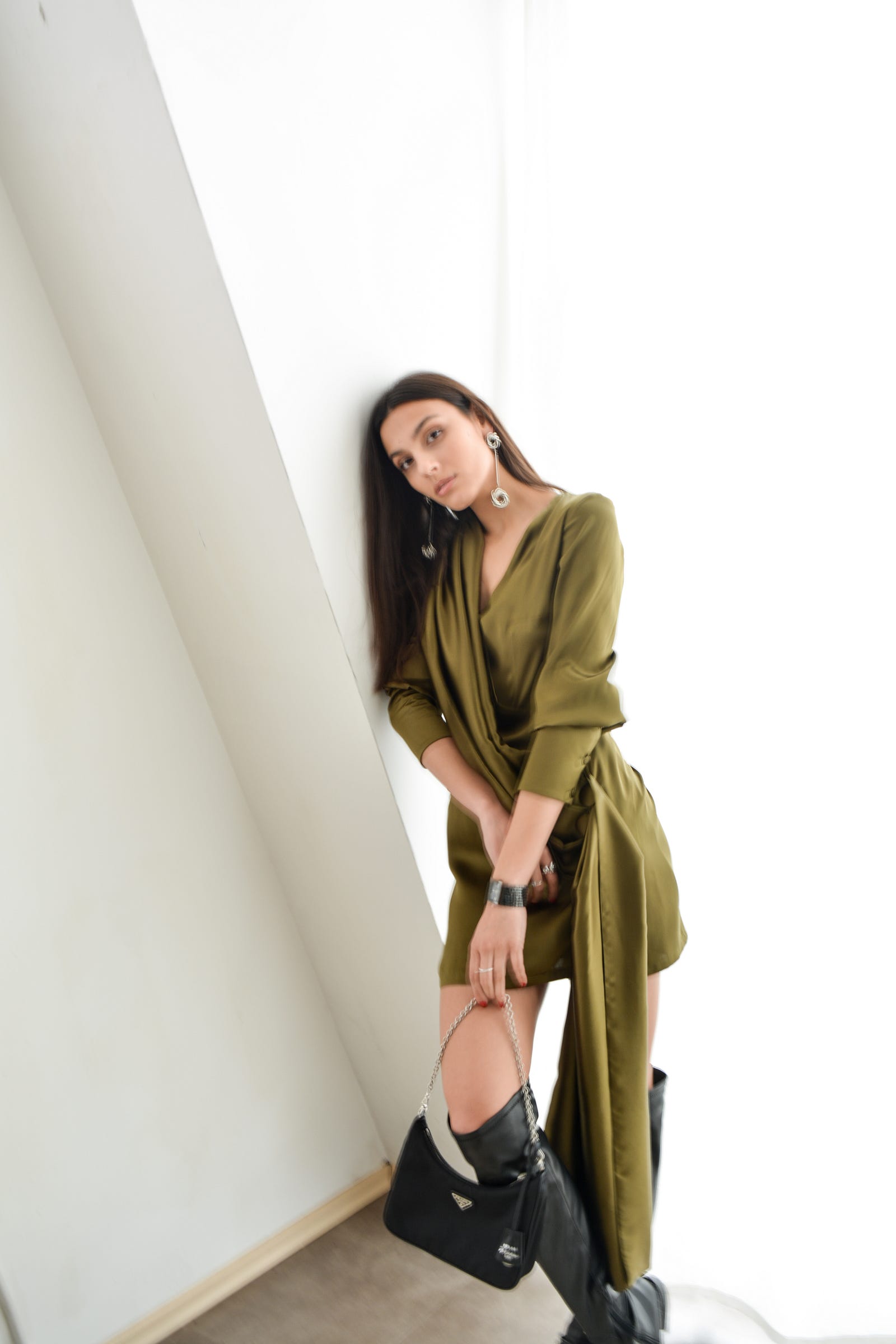
The Sylvia Suit
Sylvia Earle who was born in the 1935 is a marine biologist and oceanographer who in 1998 was named Time Magazine’s first Hero of the Planet thanks to the incredible work she has done around protecting Earth’s oceans. In 2009 she founded Mission Blue, a non-profit dedicated to creating protected marine preserves around the world. The color navy blue reminded us of her effort to safeguard, as she so gently has put it, “the blue heart of the planet”. The slick figure of the suit and its effortless, classy lines are complemented by subtle details such as silver zippers a front pockets.
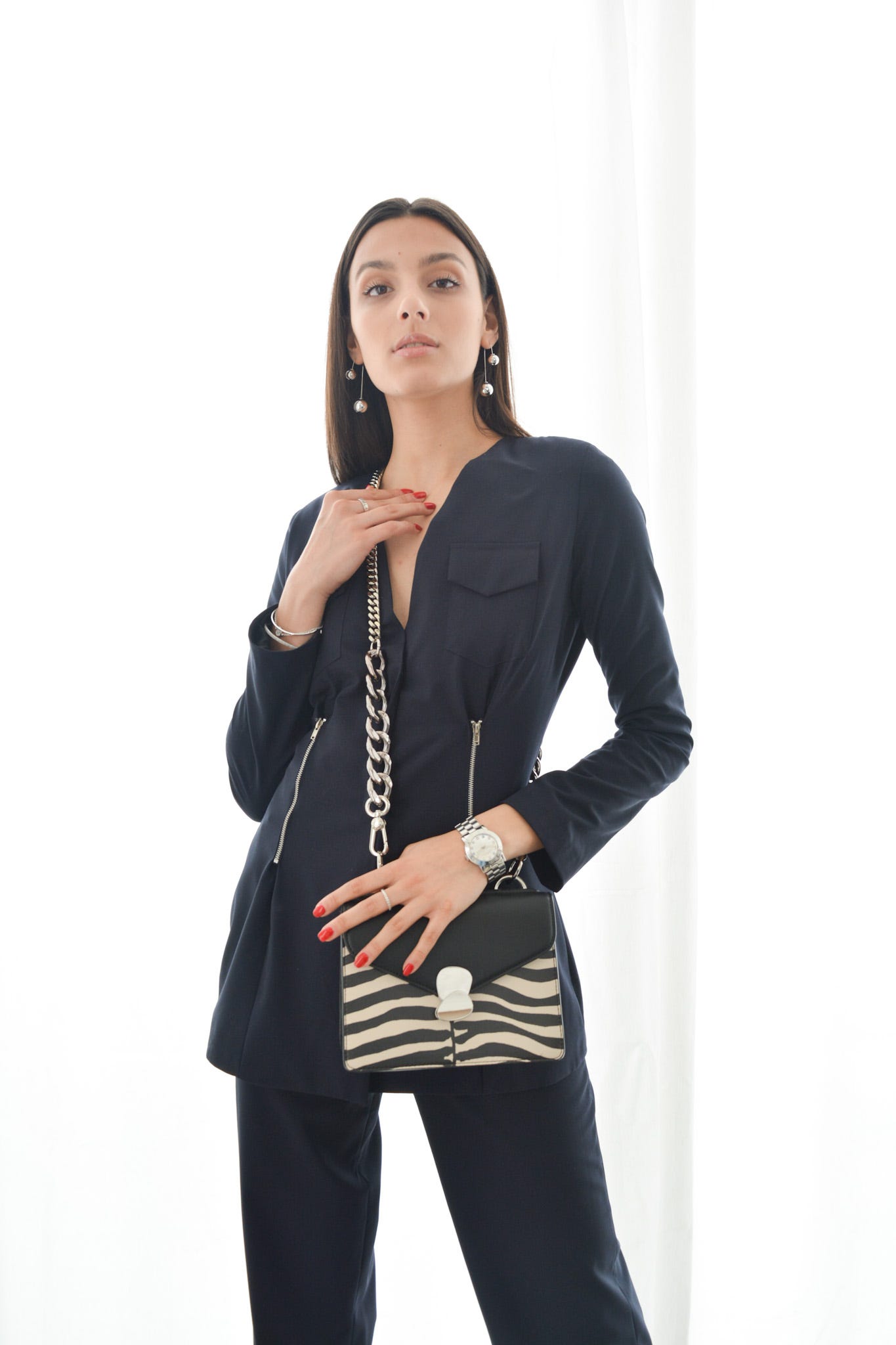
The Wangari Suit
Perhaps the most impressive woman on this list, whose impact is measured in more than 50 millions of trees planted on the soil of deforested Kenya and 30.000 women lifted out of poverty is Wangari Maathai. The 2004 Nobel Prize winner’s impressive influence ranges over educating young Kenyan women to plant trees in deforested areas and sustainably draw income from the land. The cashmere white suit’s simple lines with a bit of twist were inspired by her simple, yet potent environmental work.

The India Jumpsuit
Another impressive woman who has won over our hearts is India Logan Railey who is helping indigenous people gain right over their land. Her message to the UN, resulted in the signing of the Paris Climate Agreement, which makes her our forever girl crush. The military jumpsuit’s design was inspired by her incredible work.
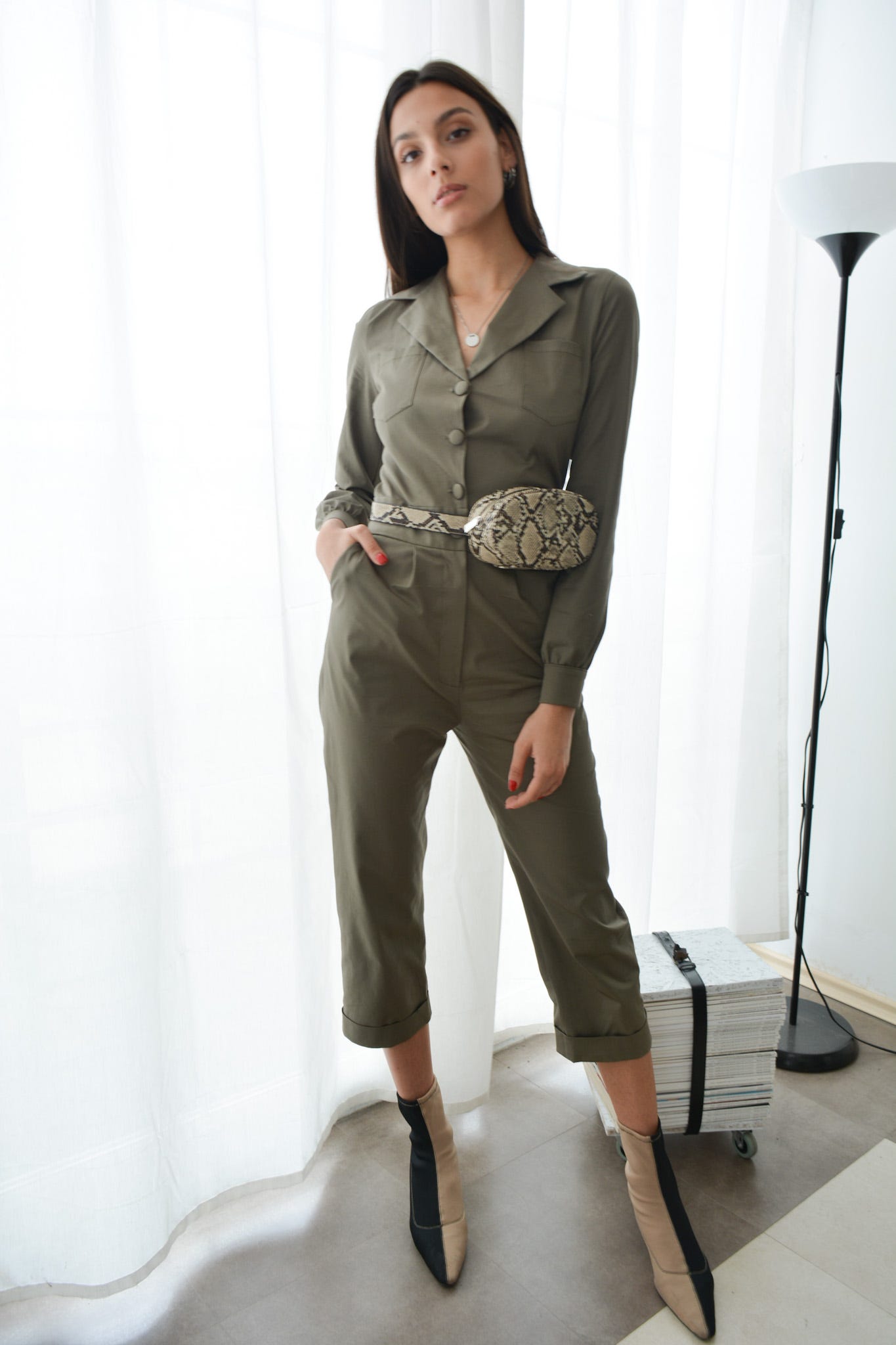
The Greta Suit
Named the “next generation leader” by Time Magazine, Greta Thunberg is one of the most influential environmental activists in the world. Her heartfelt speeches, but more so her actions, like refusing to travel by plane to reduce her carbon footprint has made her one of world’s most influential women today, making younger generations more aware about the issues of climate change and uniting them in marches to held governments responsible for their lack of action. She inspired the design behind the military suit.

The Rosalie Suit
A pioneer in advocating for the protection of animals, and quite possibly a prophet, Rosalie Barrow Edge was a ferocious advocate for the protection of wildlife. Back in 1929, she founded the Emergency Conservation Committee, which was dedicated to protecting all species of birds and animals. Her impact was so big that The New Yorker once called her “the only honest, unselfish, indomitable hellcat in the history of conservation.” The white cashmere suit with one lapel, belt looms and the pleated high waist pants are a homage to this undefeatable woman warrior.

3. Styling
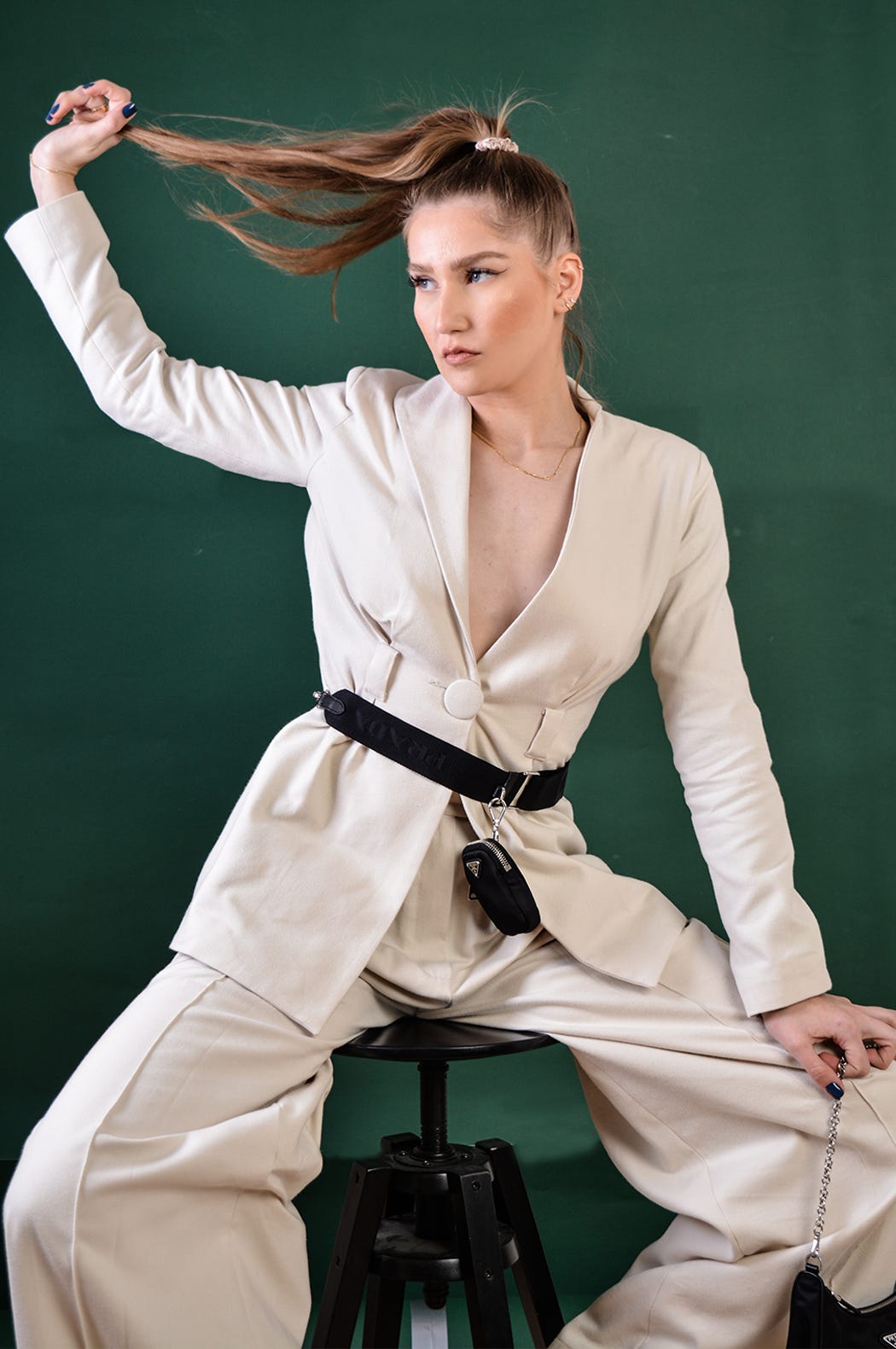
4. Photoshoot
To emphasis the fact that the entire collection is environmentally friendly and sustainable, this time we decided to shoot the product photos on green background. In addition to shooting the product photos, we shot few editorial once to show you how to mix and match the pieces. We blurred them up a bit in order to demonstrate the hazy state the world has found itself in these days, with leaders failing to recognize and take actionable measures about how serious the environmental issue has become.

Comfortable and practical with sharp and sleek silhouettes, The Mad Women collection is made entirely out of dead-stock materials, which means limited quantities are available. Can’t wait to see the pieces? Click here to browse the entire line. Some of the pieces from the collection will also be available to rent via Fjong. How cool is that?



